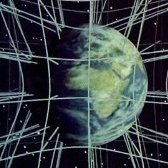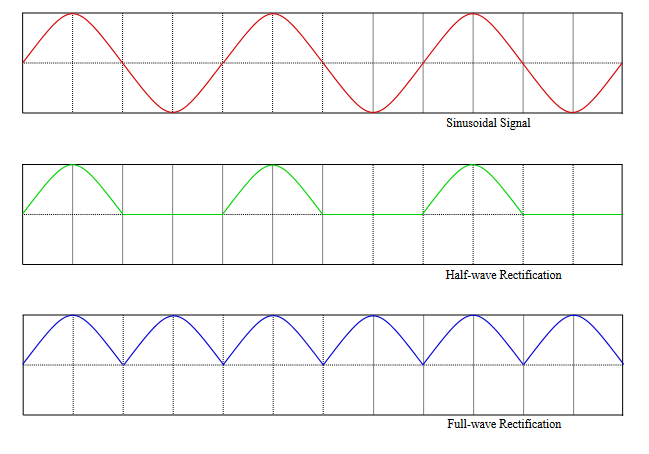Leaderboard
Popular Content
Showing content with the highest reputation on 12/28/19 in all areas
-
Newton and his contemporaries described the world in terms of 'forces'. Neither Newton, (nor Hooke) knew about the fourth great natural force - the electromagnetic force. In fact they only knew of two of the four of what we now call the four fundamental forces of nature. They also built upon the newly invented (by Descartes) maths of coordinate geometry. It should be understood that the maths and physics go hand in hand so force methods are suited to cartesian geometry and this type of geometry conditions physics thinking. Most people have an intuitive idea of a force as a driver which causes something to happen or change. They are also familiar with the idea of one force resisting another, leading to the notion of a balance of forces. The two forces (mechanical and gravity) coupled with the opposition / balance notion are enough to generate a whole wide range of physical phenoma from structural theory to vibrations at light frequencies (Newton did not do this ) to understanding why we do not fly off the spinning planet to ballistic theory enabling warships to aim for and hit targets they cannot see over the horizon and just so much more. So when asked "Why do the planets orbit as they do?" Newton's theories answered in terms of forces and the balance between mechanical (inertial) forces and gravitational ones. The next step was not relativity but energy methods that were developed one to two centuries after Newton. Here the idea was to consider the energy involved when a force acts or is opposed or balanced. A new notion of 'least energy' was introduced and names such as Castigliano, Maxwell, Hamilton and Lagrange came onto the Scene. A devotee and substantial developer of Newtonian thinking was Euler. Right at the end of the time a new type of geometry appeared, developed by Riemann. This new gometry was just as well because it allowed the flaws in the Newtonian system that had become apparent in two centuries of development, to be addressed. Thus was ushered in the new system of Relativity, which is really a change of Geometry, not Physics., although derived from physical considerations by Einstein. It was substantially fleshed out mathematically by maths professors Minkowski and Weyl. Along with the discovery of the electromagnetic force and two nuclear forces replacing Newton's collection of mechanical forces, the energy methods went on to blossom into the quantum theory. This is a very short form history of 500 years or so of development into modern Science.1 point
-
Like you other thread this one provides a good learning opportunity in focusing your questions (both are good questions whne focused) Swamps are wetlands so can be salt water (like tropical mangrove around south sea volcanic islands) or freshwater (like in northern Russia. ) (Both have swampland plus volcanoes) These make a difference and you need to distinguish the sources of water. Fresh water will need to come from higher land with perhaps extinct igneous activity. You say both dormant and active volcanoes. Sometimes the rocks provide the source of solid/soil material, which determines the nature of a swamp. Sometimes the solid material comes from decaying living matter to form materials such as peat. So tell us more of your interest to focus this thread.1 point
-
Hello COM, and welcome. ScienceForums is a good place to com ask questions and learn new stuff. I notice you have asked a second question since this one, but not tarried in this thread. Other members who put in effort to help you appreciate your further input to what is, after all, your subject. Anyway the word you ned to search with is 'caustic'. (Google etc) Caustic is a general technical term for substances that can chemically attack tissue, both living and dead. It somewhere blends into 'corrosive' . Corrosive substance attack tough inert things like metals and rocks etc. As has already be said, many caustic substances rely on being acid or alkaline; however I note you are particularly interested in 'natural' substances so here is a good resource Atkin's Molecules Peter Atkins Cambridge University Press. Peter describes lots of molecules importart to us including those that can have a burnsing effect in sufficint concentratin for example the substances in pepper and chilles Piperine and Capsaicin.1 point
-
The Higgs vacuum expectation value is 246 Gev. It is always a non zero value. One has to be careful on how one defines a true vacuum. For example a true vacuum could mean the Einstein Vacuum which is devoid of all particles. However with zero point energy there is always quantum fluctuations leading to particle production. Every coupling constant is defined by its own function. This is true for the SM coupling constants as well as those in Supersymmetry models.1 point
-
I think you are wrong in every post.1 point
-
1 point
-
And what would be the point of doing that? Cybernetics "is the scientific study of how humans, animals and machines control and communicate with each other." and people normalizing to different units is the opposite of good communication. ! Moderator Note Attitude and consciousness are not math. When I said "get to it already" I meant for you to lay out your idea. Not in bits and pieces, bringing in new topics as you go. If it's that big, give us an abstract/summary/outline.1 point
-
Although it may be bureaucratically desirable to masure the size of everything via a ratio to a standard, it seems to me thare are severeral (mathematical) problems associated with this approach. 1) Surely you don't mean the mathematical unit but the algebraic unit, for is not Geometry also part of mathematics ? 2) In terms of algebraic difficulties what happens when a = b = c = 0 ; in total accord with your stated algebraic conditions ? 3) In terms of you geometric version, how do you compare the sizes of two spheres? By radius? by surface area ? by volume ? Each will yield a different numeric answer.1 point
-
I can't quote your original post but you say two contradictory this there: You say that [math]\frac a c = \frac c b[/math] But then [math]\frac a c = \frac {\sqrt 2}{2}[/math] and [math]\frac c b = \sqrt 2[/math] So, therefore, your first statement is not true.1 point
-
Monism? https://www.dictionary.com/browse/monism This doesn’t seem to have any connection to your pretty pictures. And how is cybernetics connected to this? What does this mean? And what evidence do you have to support this claim? As this is a mathematical claim, you should be able to provide a mathematical proof. Can you do that? (Unexplained and apparently meaningless geometric constructions do not count. At least, not without some explanation.)1 point
-
Because it is diluted to ~10%. In ready dish even more diluted. You also did not have severe burns from hydrochloric acid which is in your stomach. Apart from bases, https://en.wikipedia.org/wiki/Base_(chemistry) Hydrogen Peroxide perhaps? https://en.wikipedia.org/wiki/Hydrogen_peroxide#Safety "In high concentrations, hydrogen peroxide is an aggressive oxidizer and will corrode many materials, including human skin. In the presence of a reducing agent, high concentrations of H2O2 will react violently."1 point
-
Even if that were the case, you would still see relativistic effects - for example gravitational time dilation, frame dragging around rotating bodies, gravitational light deflection, relativity of simultaneity etc etc. It would not really change anything. The theory of General Relativity, in this particular context, is largely about the empirical observation that (small enough) freely falling bodies are not subject to any forces - which is to say that if you attach an accelerometer to such a body, the instrument will read exactly zero at all times during free fall. That’s why you get a funny feeling in your tummy as you fall after jumping off a high board into a swimming pool. And yet free fall bodies are very clearly affected by gravity, so the force-based Newtonian model (though it works very well as an approximation) is ultimately not adequate as an explanation for gravity. Also, when you start looking at situations involving very strong gravitational fields, the Newtonian model makes increasingly inaccurate numerical predictions. This would continue to be the case, even if everything were nicely spherical and regular. P.S. Even Newtonian gravity does not predict everything to be spherical and “synchronous” - depending on the particulars of a given situation, you can get some very complicated dynamics in Newtonian gravity, too. You can even get chaotic dynamics, i.e. situations that are deterministic, but still not predictable into the indefinite future. So even simple laws can lead to complex outcomes.1 point
-
Hi Externet! Some polymers are excluded here: the polyolefins (PE and variants, PP, the rare PB, PMP...) as they dissolve in mineral oil, even at room temperature. The chips you saw sank neatly in oil, this indicated polymers heavier than polyolefins. Transmission oil, brake oil, hydraulic oil is about the same, except that brake oil have additional standards and names. This description is too vague: several families exist with completely different chemical compositions, at least 6 for brake fluid. For instance polyglycol+water would supposedly lose water before the polymer melts and would probably dissolve POM, maybe polyesters. They also include many additives, often undisclosed, that may pollute the polymer chips. Some are denser than many polymers. Not my first choice. While mineral lubricant oil is more stable at heat than vegetable oil, I see drawbacks to it. Almost always, it contains polyglycols to stabilize the viscosity at heat, and these are better solvents for POM and maybe polyesters. They always contain many additives, often undisclosed, that may pollute the polymer chips. When used, they also contain metal nanochips that will botch, or at least taint, the recycled polymer. Vegetable oils are at least better known. They include no additive usually, just the mix of triglycerides. Their stability at heat varies, where saturated oils like coconut or palm survive better than highly unsaturated ones like linseed, and traditional peanut, sunflower, maize are good. This is known from cooking. Used cooking oil contains impurities that are often removed, first by good filtration: check what is done before burning these recycled oils in Diesel engines. In every case, I'd try to have a flash point well over the operating temperature, but this looks difficult. Hot liquid is interesting to melt chips quickly but has drawbacks. Did you consider microwaves? Hot nitrogen with active movement?1 point
-
4. Seeing significance and meaning where there is none: https://en.m.wikipedia.org/wiki/Apophenia1 point
-
! Moderator Note Get to it already.1 point
-
Not sure but maybe: 1: Having two "Fig. 2" in the post making it harder to understand? 2: Not clearly stating what you wish to discuss, is it a blog post or a question? 3: Opening a new thread on a subject when told not to?1 point
-
Wow, this post is giving me deja vu!1 point
-
As swansont has already stated, dark matter is matter that is hypothesized to exist due to the apparent gravitational effects we see, but which doesn't interact electromagnetically like the regular matter we are used to dealing with. This means it does not emit, reflect, or absorb light either, thus the description "dark". And as he said, we don't really know just what it is made up of yet. There are a couple of possibilities. Massive Compact Halo Objects (MACHOs) would be objects like neutron stars and black holes. These are object formed from "normal" matter (or at least a far as black holes go initially from it), but compact so much mass into a small area that they are just to small and dim to see individually. However, we need quite a bit of dark matter to explain observations, and there are reasons why we don't think the universe could have this much mass in the form of MACHOs, as it would have effected how the universe evolved, resulting in one that looks a bit different from what we see. Another possibility is Weakly Interacting Massive Particles (WIMPs) These are sub-atomic particles that have a rest mass, but just don't interact via the electromagnetic interaction. (And pretty much everything having to do with how we interact with regular matter, from touching it or seeing it, to chemical reactions involves electromagnetic interaction) These "ghost-like" particles would pass right through you like you weren't even there. While this this seems bizarre, we actually already know of a particle that behaves like this, the neutrino; Billions of them pass through you every day with your ever noticing it. Neutrinos ( or at least the type we know of) don't work for dark matter for various reasons, so the WIMPs of dark matter would be something like, but not identical to neutrinos. It is also possible that both of the above play a role in making up the total effect we see. swansont also mentioned attempts to explain things by a modified theory of gravity. The problem with this is that a number of observations are not compatible with such an explanation. An example would be galaxies that appear to be identical but exhibit different gravity profiles. Even if the rule of gravity were different than what we presently think they are, they would still need to be consistent from galaxy to galaxy. So while its perfectly possible for different galaxies to contain different amounts of dark matter and thus as a whole act differently in terms of gravity, it is hard to explain why the actual rules governing gravity would change between galaxies. Having said this, it is still possible for a modified gravity theory to play some role, if combined with dark matter. A new theory of gravity which also incorporates a mix of MACHOs and WIMPs could end up being the final answer. Right now we are at the stage of continuing to make observations in order to narrow the playing field. We have eliminated some possibilities, but there are more to explore.1 point
-
A clock near a black hole ticks at “1 second per second”, a ruler near a black hole is “one meter per meter” long. A clock on Earth ticks at “1 second per second”, a ruler near Earth is “one meter per meter” long. Locally in their own small enough neighbourhoods, neither observer determines anything special to be happing. As the name already implies, relativistic effects become apparent only when you compare clocks and rulers in different frames - they are relationships between frames, not things in and of themselves that somehow happen to clocks and rulers. No clock will ever tick at anything other than “1 second per second”, and no ruler will ever measure anything other than “1 meter per meter”, within their own local frames. Time does not “slow”, space is not “stretched”, they merely become local concepts. It is crucially important to understand this point. So, in order to determine the geometry of spacetime, you need to either compare clocks and rulers at different events, or (equivalently) observe what happens when they traverse extended regions of spacetime. What you find then is that different observers may disagree on specific measurements of space and time, but they will always agree on how those measurements are related to one another. In other words - all observers agree on the geometry of spacetime. Mathematically speaking, the object that quantifies relevant aspects of the geometry of spacetime (in GR that is the Einstein tensor) is something that all observers agree on, regardless of where and when they are, or how they measure and determine it. The components of the tensor vary as you go from one observer to another, but they vary in such a way that the overall tensor remains the same one - that is the meaning of “covariance”.1 point
-
And it is up to you to show that this effect produces the observed galactic rotation curves. Can you do that?1 point
-
If you are unwilling to calculate the effect, you aren’t doing science. There’s no conversation to be had without quantifying this.1 point
-
1 point
-
See https://en.wikipedia.org/wiki/Gravitational_wave Read the section "Sources", as that explains some cases where gravitational waves are emitted (or "in most cases" aren't). In particular, in the case of black hole mergers, a lot of mass can be lost as gravitational waves. This comes from the extreme acceleration of the masses rotating around each other. That's about 5% of the mass, radiated away. But once merged, the mass stops accelerating and losing mass to gravitational waves, as the animations and charts show.1 point














